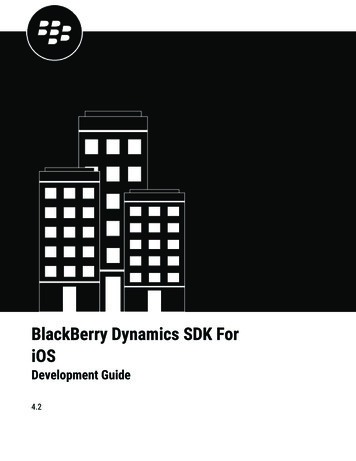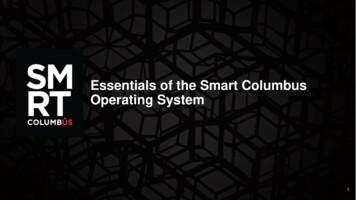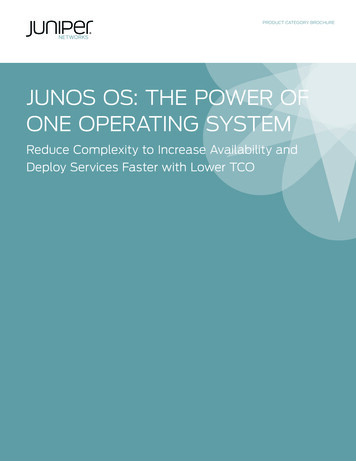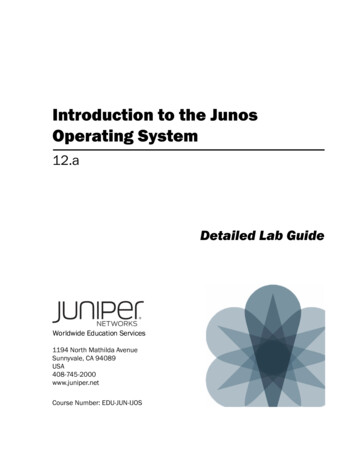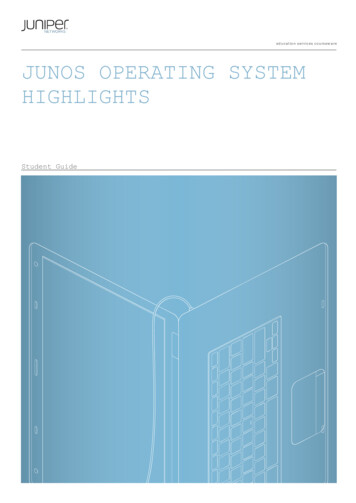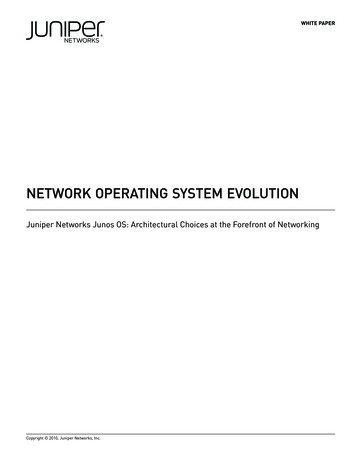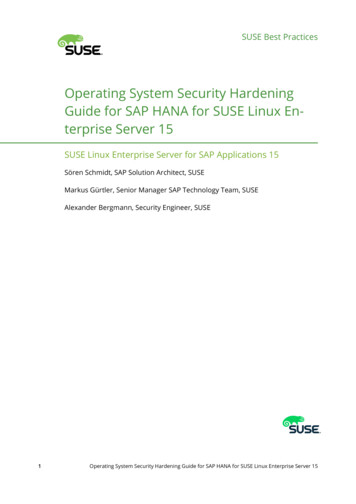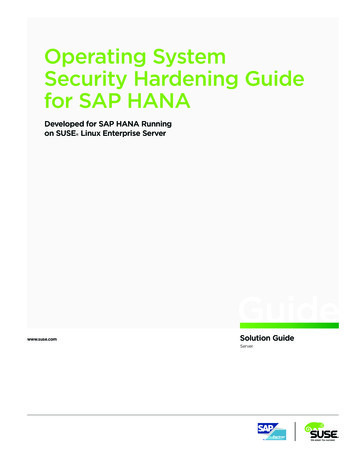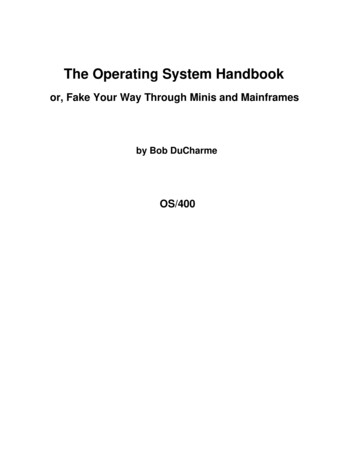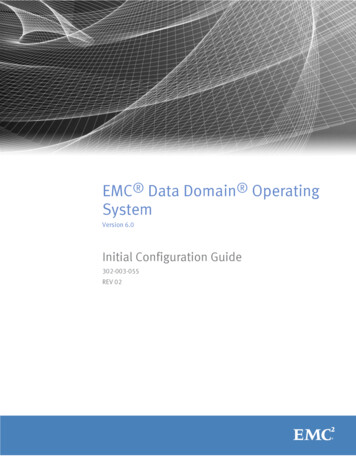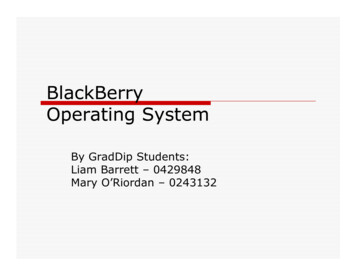
Transcription
BlackBerryOperating SystemBy GradDip Students:Liam Barrett – 0429848Mary O’Riordan – 0243132
Topic OutlineooooooooIntroductionHistory of BlackBerry OSBlackBerry OS ArchitectureMemory ManagementInterruptsMulti-TaskingFuture of BlackBerryConclusion
Introduction to BlackBerryo The BlackBerry is a Smartphone devicereleased by Research In Motion (RIM) in 1999o Since it was released, its popularity soared dueto following functions:n ability to send and receive internet e-mail using the“push” method of deliveryn phone and texting functionalityn supports Internet faxing and Web browsingn supports the viewing of Office applicationsn ability to support numerous other wirelessinformation services
Introduction to BlackBerryo Bonus’s ofBlackBerry:good choice of carrierchoice of devicesmultitasking featuresmultimedia Messagingfeaturen e-mail and corporateintegrationn memory card slotn removable batterynnnn
Introduction to BlackBerryo The BlackBerry Operating System is a softwareplatform developed by its manufacturer RIMo Its OS provides multi-tasking that maximises use ofthe devices specialised platform including:n trackball, trackpad and touchscreeno Updated versions of the BlackBerry OS are releasedregularly to support new BlackBerry Smartphonesn latest OS version is OS 5.0o The current version of the OS allows completewireless activation and synchronization withExchange’s email, calendar and other features
The History of BlackBerryVideo History of the BlackBerry
The History of BlackBerryo Early versions of blackberry were simply two-waypagers, that were particularly popular in business fortheir focus on e-mail facilities, as well as providingwireless internet and calendar functionso With the release of the 5000 and 6000 series, BlackBerrymade the switch to mobile phones and introduced aJava-based kernelo The 7000 series followed, and were the first to featurecolour screens and Bluetooth capabilityo The 8000 and the 9000 series were the first to betargeted at general consumers, incorporating morecommercial features, such as built-in cameras, memorycard slots and clearer screens
BlackBerry OS Architectureo For the purposes of this presentation, we havechosen the BlackBerry 9000 series, which runsv5.0 of the BlackBerry OSo This version of the BlackBerry OS has a Javabased kernel, and utilizes an ARM architecturewith an Intel XScale processoro ARM is a Reduced Instruction Set Computer(RISC) type instruction set architectureo It uses 16 x 32-bit registers, 1 processorstatus register and a load/store architecture
BlackBerry OS Architectureo ARM does not manufacture its own CPU chips,but licenses it to other manufacturers to integratethem into their own systemo The latest series of BlackBerry phones(the 9000 series) uses a XScale microprocessor coreo This processor utilizes an open sourcebootstrap firmware called RedBoot(Red Hat Embedded Debug andBootstrap), designed for embeddedsystemsARM Core
BlackBerry OS Architectureo The ARM v5TE Instruction Set
Memory Managemento Memory is divided into three sections:n Application Memory ( 128MB)o a dedicated memory space for applicationstorage and overheadn Device Memory ( 850MB)o for storing files and other median Memory Card (optional)o an optional method of file storage
Memory Managemento A common criticism of the BlackBerry is that DeviceMemory cannot be allocated to supplementApplication Memoryn this is especially inconvenient as ApplicationMemory handles all the overhead for runningapps. If the device also has memory cardstorage, this makes the Device Memoryredundanto Also, the memory manager does not releasememory after applications are closed, which canlead to a considerable slowdown of the device overtime or prolonged usen this is a major drawback for a device that isprimarily marketed at those in business
Interruptso A feature of the ARM architecture is to allowdesigners to make the decision betweenperformance vs. latency tradeoffso For example:n instructions that would normally run to completioncan be made interruptible where low latency is apriorityo This is particularly useful in the case of mobilephones or other telecommunication devices, whichrun on embedded systems that require low latencyto perform adequately
Sample CPU boardo Blackberry Storm: CPU boardn Contains a Qualcomm chipset with a 528 Mhzprocessor and both EV-DO and HSDPA modems
Multi-Taskingo The BlackBerry supports multitaskingo It can thus run more than one application at atimeo For example:n while making a call, you can switch to thecalendar or contacts applicationo These applications run in the background whilecarrying out current tasko However, the more applications that arerunning, the more memory used by device
Future of Blackberryo The future of blackberry is looking very upbeat.o RIM has plans to release new improved models inthe coming year with the following features:n Improvement of browser with full Flash andMicrosoft Silverlight supportn Upgrading of speed with LTE devices that canachieve speeds of up to 10 Mbpsn Upgrading of operating system to OS 6.0 in nextfew monthso The new OS will feature kinetic scrolling and shouldfurther enhance its popularity in industry
Conclusiono The blackberry OS is the software platformwithin the deviceo Each new OS version, in turn leads to betterbrowsing facilities and larger memoryo The blackberry is on par with the iPhone as asmartphone leadero It may even surpass it due to it’s multitaskingfeatures and ability to support wirelessdevices!
courses/2B1445/Lectures/Lecture2/2B1445 /TIE345/luentokalvot/Embedded 3 ourses/2B1445/Lectures/Lecture2/2B1445 /TIE345/luentokalvot/Embedded 3 -support-in-browser/
Memory cannot be allocated to supplement Application Memory n this is especially inconvenient as Application Memory handles all the overhead for running apps. If the device also has memory card storage, this makes the Device Memory redundant o Also, the memory manager does not release
